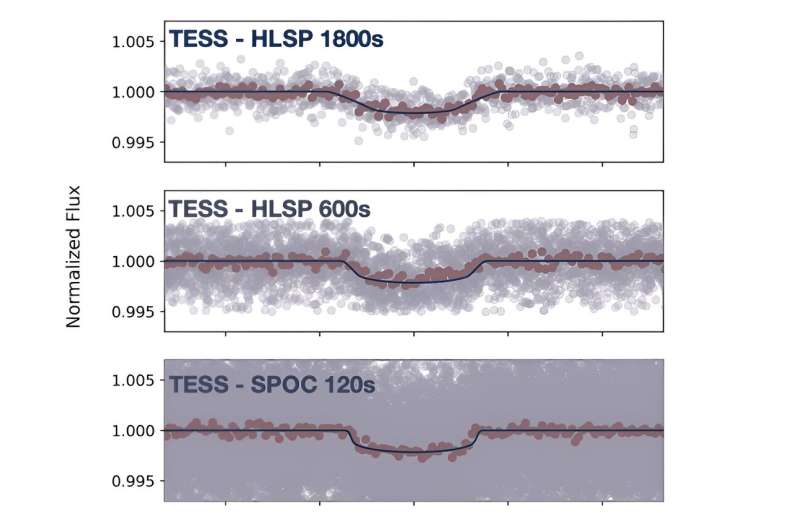July 16, 2024 report
This article has been reviewed according to Science X's editorial process and policies. Editors have highlighted the following attributes while ensuring the content's credibility:
fact-checked
preprint
trusted source
proofread
New ultra-hot Neptune-sized exoplanet discovered

Using NASA's Transiting Exoplanet Survey Satellite (TESS), an international team of astronomers has detected a new exoplanet. The newfound alien world, designated TOI-3261b, is nearly the size of Neptune and its equilibrium temperature exceeds 1,700 K. The finding was reported in a research paper published July 5 on the pre-print server arXiv.
To date, TESS has identified more than 7,200 candidate exoplanets (TESS Objects of Interest, or TOI), of which 482 have been confirmed. Since its launch in April 2018, the satellite has been conducting a survey of about 200,000 of the brightest stars near the sun with the aim of searching for transiting exoplanets—ranging from small, rocky worlds to gaseous giants.
Another TOI monitored by TESS has recently been confirmed by a group of astronomers led by Emma Nabbie of University of Southern Queensland in Australia. They report that a transit signal identified in the light curve of TOI-3261, a K-type main sequence star about 972 light years away, is caused by a planet.
"We confirm TOI-3261 b as a planet through multiple, independent detection methods. From ground-based observatories, we find on-target transit signals, reproducing the signals first seen by TESS," the researchers explained.
TOI-3261 b has a radius of approximately 3.82 Earth radii, therefore it is only about 2% smaller than Neptune. However, the newfound exoplanet has an unusually high mass for its size—around 30.3 Earth masses. These results yield a high bulk density of 3.0 g/cm3.
TOI-3261 b orbits its host every 0.88 days at a distance of 0.017 AU from it. Due to this, it was classified as an ultra-short period planet (USP), and so far, it is only the fourth known Neptune-sized USP. Moreover, the planet's proximity to its parent star, which has an effective temperature of about 5,070 K, suggests that this extrasolar world is ultra-hot—with an estimated equilibrium temperature at a level of 1,722 K.
Based on the collected data, the astronomers assume that TOI-3261 b retains a gaseous envelope, with a core potentially enriched with water. They estimate that this gaseous envelope constitutes about 5% of the planet's total mass, which is the second highest fraction among the known Neptune-sized USPs.
When it comes to the star TOI-3261, it has a spectral type K1.5 V and is about 13% smaller and less massive than the sun. The star is estimated to be 6.5 billion years old and its metallicity is at a level of 0.11 dex.
Summing up the results, the authors of the paper note that TOI-3261 b is an excellent target for follow-up atmospheric observations. Such studies could be conducted using space observatories like the James Webb Space Telescope (JWST).
More information: Emma Nabbie et al, Surviving in the Hot Neptune Desert: The Discovery of the Ultra-Hot Neptune TOI-3261b, arXiv (2024). DOI: 10.48550/arxiv.2407.04225
Journal information: arXiv
© 2024 Science X Network





















